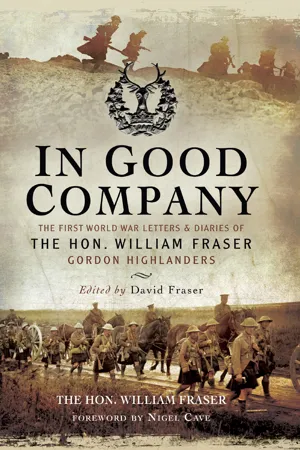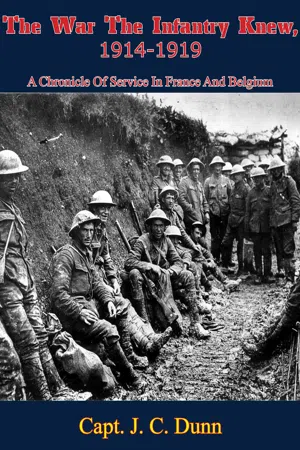Battle of Passchendaele
The Battle of Passchendaele, also known as the Third Battle of Ypres, was a major campaign of World War I fought between July and November 1917 near the town of Ypres in Belgium. It was characterized by heavy rain, mud, and high casualties, with both sides suffering significant losses. The battle is remembered for its brutal trench warfare and the enormous human cost.
8 Key excerpts on "Battle of Passchendaele"
- eBook - ePub
Stretcher Bearer!
Fighting for life in the trenches
- Charles Horton, Dale le Vack(Authors)
- 2013(Publication Date)
- Lion Books(Publisher)
...8 THE THIRD BATTLE OF YPRES (PASSCHENDAELE) P ROLOGUE The Third Battle of Ypres ran from late July until November 1917. It was a major offensive with ambitions to break out of the Ypres Salient and push the Germans back to the Belgian coast, but it quickly became another major battle of attrition, with small gains made at the cost of appalling casualties on both sides. It is commonly now known as the Battle of Passchendaele, taking the name of an obliterated village captured by Canadian troops shortly before the close of the offensive. Flanders is flat, low-lying country and the “ridges” towards which the British advanced are barely discernible; this landscape, and an unusually high summer rainfall, created the wet, muddy conditions for which the battle is now infamous. Wounded men drowned in the mud, it immobilized transport, and stretcher bearers struggled to bring casualties back through the morass. Often, eight bearers would be required for a single casualty owing to the muddy conditions, the weight of the mud-plastered stretcher, and the soaked clothing of the wounded man. The battlefield became a shattered wasteland because of the shellfire, which also took a heavy toll of stretcher bearers. After the capture of Passchendaele, the battle fizzled out; both sides were left exhausted. The Germans had suffered around 250,000 casualties, the British, Canadians and Australians around 300,000. Today, the Tyne Cot Memorial Cemetery situated close to the scene of the final stages of the Passchendaele attrition, is the largest Commonwealth War Graves Commission cemetery in the world. Tens of thousands of the Commonwealth soldiers remembered here have no known grave, their remains perhaps atomised during bombardments or lost in the mud of the battlefield. It is a sombre place and captures the feeling that the very word “Passchendaele” now conjures up, one of waste and futility...
- eBook - ePub
- Anthony Tucker-Jones(Author)
- 2016(Publication Date)
- Pen & Sword Military(Publisher)
...Seven days later nineteen enormous British mines devastated the German front lines, killing around 10,000 men. Some of the soldiers killed by the British mines on Messines Ridge. British tanks moving up for the attack. Just seventy tanks were available for the opening stages of the Third Battle of Ypres known as the Battle of Messines. A massive British 15in howitzer. The bombardment at Passchendaele tore up the battlefield even more, and added to this the rain made the ground all but impassable for the tanks. British 18-pounder battery near Boesinghe on 31 July 1917. This is what greeted the tank crews – a morass of boggy ground that would suck the unwary under. This tank lost its tracks and was destroyed by German shell fire. Stranded in a sea of mud and craters. Passchendaele proved wholly unsuitable for the deployment of tanks. Only along the firmer ground of the St Julien-Poelcappelle road did they achieve any notable success. The Third Battle of Ypres was re-launched on 20 September 1917 on the Menin Road. These wounded Australians were photographed on the Menin Road, near Birr Cross that day. Two abandoned tanks at ‘the tank graveyard’ near Clapham Junction east of Ypres looking toward Sanctuary Wood on 23 September 1917. 18-pounders belonging to the Australian 2nd Division near Bellewaarde Lake, Ypres, in action on 28 September 1917. The French renewed their attack on the Chemin des Dames Ridge on 23 October 1917 employing their St-Chamond (seen here) and Schneider tanks. This time they achieved better results than during the ill-fated Nivelle Offensive in April. Men from the Australian 4th Division amidst the shattered remains of Chäteau Wood near Hooge in the Ypres Salient at the end of October 1917. Men, animals and vehicles were simply swallowed by the deep mud. The rather sinister-looking ‘splatter mask’ which formed part of the British leather and chain-mail tank helmet designed to protect the wearer’s face and head inside the tank....
- eBook - ePub
Letters From The Trenches
A Soldier of the Great War
- Bill Lamin(Author)
- 2012(Publication Date)
- Michael O'Mara(Publisher)
...The area to the north of the Menin Road had been a marsh before ever the battle started. The bombardment and the rain simply combined to produce a morass of almost impassable mud. After five months of heavy fighting, Canadian troops finally took the village of Passchendaele on 6 November. By then, the once substantial village had been reduced to a smear of rubble and brick dust in a sea of mud and shell holes. The cost had been immense. The Allies had sustained almost half a million casualties, while the Germans reported just over a quarter of a million men killed or seriously wounded. For the Allies, a gain of around five miles (8km), capturing the high ground around Ypres, had cost 140,000 lives. Yet despite this cost in lives and the suffering of the troops, the Allies were forced to withdraw from the high ground just four months later, virtually back to their original line. This ‘last-push-to-achieve-a-breakthrough’ philosophy permanently damaged Haig’s reputation. The huge losses to achieve little of any importance, and his determination to persist with the offensive in such terrible conditions, were unforgivable. There are many accounts of Passchendaele by those who survived it. The overall German commander in the sector, General Erich Ludendorff, shows nothing but admiration for the men of both sides: The horror of the shell-hole area of Verdun [February–December 1916] was surpassed. It was no longer life at all. It was mere unspeakable suffering. And through this world of mud the attackers dragged themselves, slowly, but steadily, and in dense masses. Caught in the advanced zone by our hail of fire they often collapsed, and the lonely man in the shell-hole breathed again. Then the mass came on again. Rifle and machine-gun jammed with the mud...
- eBook - ePub
Come on Highlanders!
Glasgow Territorials in the Great War
- Alec Weir(Author)
- 2009(Publication Date)
- The History Press(Publisher)
...They had to scramble into their masks and take cover while about thirty gas shells came over at the rate of about one every two minutes – after which the day was quiet. The following day they were relieved and moved back to Neuve-Eglise. Their casualties in this hellish past week had been remarkably light, just one man being killed by the rifle grenades, and two by shelling. The gas attack had incapacitated just one, and slightly affected three others. PASSCHENDAELE – ‘HELL ON EARTH’ While they had been at Messines, the almost impossible task of capturing the Passchendaele Ridge was somehow achieved. This meant that the series of attacks comprising the 3rd Battle of Ypres was now at an end – but it didn’t mean that the misery of ‘Passchendaele’ was over because the precious ridge, so dearly won, now had to be held. The attacks across the low ground between Ypres and Passchendaele had been accompanied by artillery bombardments of such intensity that the quagmire that had formerly been fields interlaced with drainage ditches was now like thick, black porridge. There had been no question of tanks being able to cross it, and the only way that horses, mules or men could make their way was on duckboards. So just as virtually impossible odds had somehow been surmounted in capturing the ridge it was now going to mean more of the same to hold it and keep it supplied. This was the unenviable task to which the Glasgow Highlanders, among many others, were now being assigned. On 16 November the Glasgow Highlanders left Neuve-Eglise. They spent two nights in Locre (Loker in Flemish, a small village just to the west of Mont Kemmel) and then moved five miles due north to a camp at Brandhoek (a village about four miles west of Ypres). They found this to be ‘in a filthy condition’ (Glasgow Highlanders’ War Diary) and much of the next week they spent cleaning it. On 25 November they moved up to the support positions on the north-eastern outskirts of Ypres at Potijze...
- Colonel John Buchan(Author)
- 2014(Publication Date)
- Verdun Press(Publisher)
...For a fortnight we were compelled to hold our hand, since till the countryside grew dryer advance was a stark impossibility. The second stage of the Ypres struggle began on 16th August, when the Fifth Army attacked the German third position, the Gheluvelt-Langemarck line, which ran from the Menin road along the second of the tiers of ridges which rimmed the Salient on the east. These tiers, the highest and most easterly of which was the famous Passchendaele crest, had the common features that they all sprang from one southern boss or pillar, the point on the Menin road marked 64 metres, which we knew as Clapham Junction, and all, as they ran northward, lost elevation. The attack, which took place at dawn, made a considerable gap in the German third line, but it was very far from attaining its main objectives. That day, indeed, showed at its best von Armin’s new defensive method. The weather was in his favour, for the air was thick and damp, making airplane observation difficult, and therefore depriving us of timely notice of the enemy’s counterstrokes. The ground was sloppy, and made tangled and difficult with broken woods; and the whole front was sown with “pill-boxes,” against which we had not yet discovered the proper weapon. The result was a serious British check. The splendid courage of the Fifth Army had been largely fruitless. Fine brigades had been hurled in succession against a concrete wall, and had been sorely battered. The troops felt that they were being sacrificed blindly; that every fight was a soldiers’ fight, and that such sledge-hammer tactics were too crude to meet the problem. For a moment there was a real ebb of confidence in British leadership. Sir Douglas Haig took time to reorganize his front and prepare a new plan. He extended Sir Herbert Plumer’s Second Army northward, so that it should take over the attack on the enemy front on the Menin road. Sorely tried divisions were taken out of the line, and our whole artillery tactics were revised...
- eBook - ePub
Ghosts of War
A History of World War I in Poetry and Prose
- Andrew Ferguson(Author)
- 2016(Publication Date)
- The History Press(Publisher)
...Fifteen thousand British and Indian troops died. On 27 May the Second Battle of Ypres ended. Walter Scott Stuart Lyon – I Tracked a Dead Man Down a Trench Walter Lyon was born in North Berwick and educated at Balliol College, Oxford, before becoming an advocate. He enlisted in 1914 as a lieutenant in the 9th Battalion, Royal Scots. Lyon was killed during the Second Battle of Ypres. I Tracked a Dead Man Down a Trench I tracked a dead man down a trench, I knew not he was dead. They told me he had gone that way, And there his foot-marks led. The trench was long and close and curved, It seemed without an end; And as I threaded each new bay I thought to see my friend. I went there stooping to the ground. For, should I raise my head, Death watched to spring; and how should then A dead man find the dead? At last I saw his back. He crouched As still as still could be, And when I called his name aloud He did not answer me. The floor-way of the trench was wet Where he was crouching dead: The water of the pool was brown, And round him it was red. I stole up softly where he stayed With head hung down all slack, And on his shoulders laid my hands And drew him gently back. And then, as I had guessed, I saw His head, and how the crown – I saw then why he crouched so still, And why his head hung down. THE EASTERN FRONT Germany had recognised that the war on the Western Front had reached a stalemate and the decision was made to strengthen their defensive system. The first line of the German trenches had been deliberately positioned on high ground to give an effective field of fire, with the second line constructed on the reverse slope and thus protected from the Allied artillery...
- eBook - ePub
In Good Company
The First World War Letters and Diaries of The Hon. William Fraser–Gordon Highlanders
- William Fraser, David Fraser, David Fraser(Authors)
- 2016(Publication Date)
- Pen & Sword Military(Publisher)
...Also a staff ride for officers and N.C.O.’s over the training area. It is all right as far as the black line, but after that the ground becomes quite unsuitable, and I have had to find some fresh. They are now busy trying to take away my whole bn. in two and threes to do odd jobs; they seem to think it is inexhaustable. Have protested that if this goes on I shall have no men to fight a battle. On the whole a busy day, paper about these operations comes pouring in – every time I go to the Orderly Room I find fresh piles. However all’s well if it ends well. I hope the Boche morale is low. The operations for which Willie’s battalion was practising were those known, officially and later, as ‘Third Ypres’; or, inaccurately and tragically, as ‘Passchendaele’. * The main battle was to start at the end of July. Haig’s determination to carry out a 1917 offensive in Flanders has been much criticised. It has been said that one of the motives given – to clear the Germans from the Belgian coast in order to help the Navy – was ill founded since the principal German submarine bases were not in Belgium but Germany. It has been said that, had Haig only waited, the French Army was on the road to recovery from earlier disasters (and mutinies) and could have undertaken effective and simultaneous operations...
- eBook - ePub
The War The Infantry Knew, 1914-1919
A Chronicle Of Service In France And Belgium
- Capt. J. C. Dunn(Author)
- 2016(Publication Date)
- Lucknow Books(Publisher)
...CHAPTER XV—September 1917-January 1918 The Ypres Salient: Behind “Menin Ridge”—“Polygon Wood”—Messines—Hewers of Wood—Passchendaele, unrestful—Christmas in “Pop.”—Chinese Justice—Passchendaele, at ease—Drawers of Water—Dissension in high places Contributors: CHARLTON; DOCHERTY; LL. EVANS; HUGHES; CUTHBERT JONES; E. R. JONES; M. JONES; KEARSLEY; KENT; MOODY; SMITH; H. SPENS; RADFORD—Sketches: 4, 5, 20, 21 September 21 st.— The Division is now in X Corps reserve: brought in, as on the Somme and at Arras, when and where progress tarries. The Brigade is in reserve; and the Battalion, in reserve as usual, is finding working-parties galore. After lunch Mann and I rode among the dwarf oaks of Mont Rouge to its top. South, west and north there is a tumble of hill, wood and waste land, all in fine colour. Our curiosity was in the east. Not far off some of our heavies were firing. The stumps of Ypres could just be seen in a haze that hid everything beyond. Uppermost in my mind rose scenes of a visit the autumn before the War. It was about this time. The children were playing conkers, and throwing chestnuts at each other and, slyly, at passers as we came along the street from St. Jacques.—In the evening one of our sausages was brought down in flames. At night there was a clear sky with stars and no moon. In these conditions an air-raid is more of a fireworks display than ever, for tracer-shell has been added to tracer-bullet and searchlight. The raider glistened like a moth in a beam of light; unlike the moth he doubled and doubled to escape it. September 23 rd.— Between 4 and 5 a.m. there was a lot of gunfire. Our first cases of mustard gas have occurred in a party digging a buried cable last night. Fifteen have gone to hospital with redness or blistering of sweaty parts, streaming eyes, vomiting, and a few have some cough. Our casualties of all sorts so far are 30...

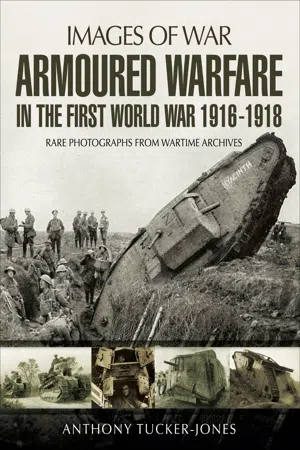
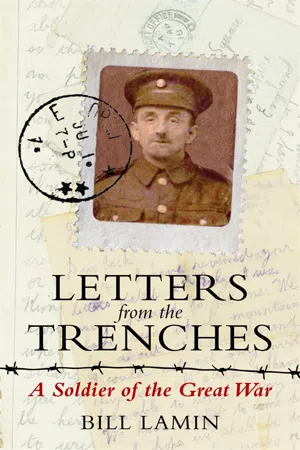
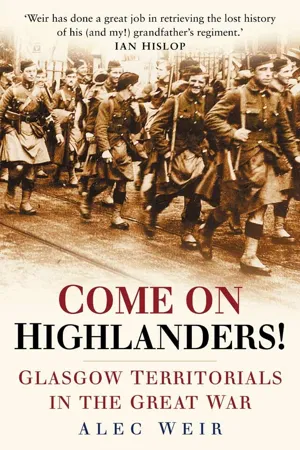
![The History Of The South African Forces In France [Illustrated Edition]](https://img.perlego.com/books/RM_Books/inde_pub_group_sqonxaw/9781782893769_300_450.webp)

